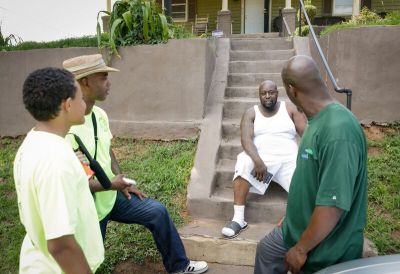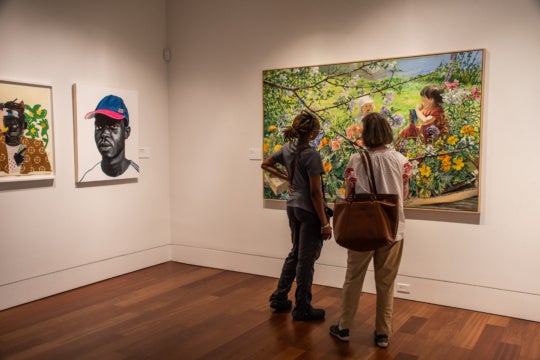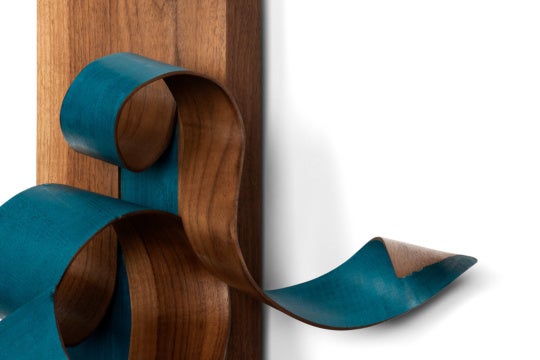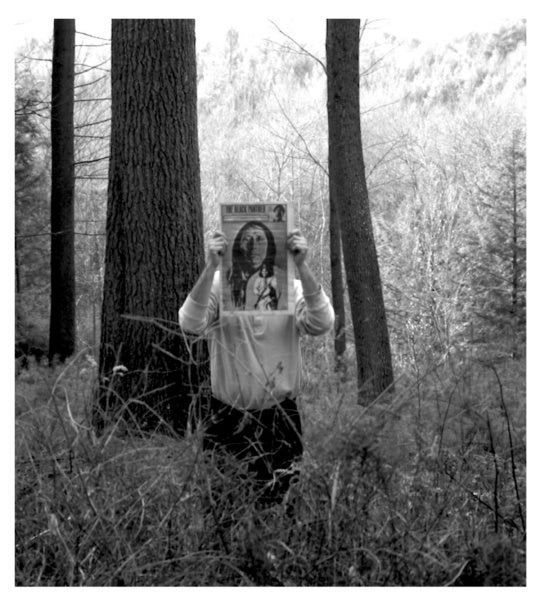It should have been a dream-come-true artist residency and a template for responsible and holistic community redevelopment. But an apparent breakdown in communication and trust between the Macon Arts Alliance and artists Ed Woodham and Samantha Hill led to the artists being terminated from their contracts on July 26, just a few weeks into their 3-month and 4-month residencies.
For its new social practice residency, the Macon Arts Alliance (MAA) brought in Hill (cultural producer from Chicago) and Woodham (visual and performance artist from Brooklyn) to create work in response to the Mill Hill neighborhood, a four-block stretch of mostly dilapidated and boarded-up homes that is being revitalized into a community arts hub by MAA and the Urban Development Authority. A breakdown in communication and differing expectations from the artists and administrators apparently led to the falling out.
The day after their termination, the artists sent out a joint statement claiming that they had been “run out of town” by MAA and that the Mill Hill Social Practice Residency was an “art-washing” scheme. This scathing essay set off a stink bomb that caused a flurry of national attention and made both MAA and the artists look unprofessional. In the statement, Hill and Woodham speculate that the true purpose of the Mill Hill artist residency is to “artwash” the neighborhood to prime it for gentrification. They claim that the residents they spoke to feel abused by the project, though they declined to provide names or quotes in a phone interview. The situation sheds light on the increasingly popular use of art and artists to help revitalize neighborhoods.
In response, MAA issued a press release on August 1 stating that the artists were terminated for not fulfilling their contractually obligated duties. They were offered one month’s severance pay beyond their termination date. Hill and Woodham declined the “hush money” because it would’ve required them to sign an agreement admitting breach of contract. Present at the meeting with the artists were MAA Executive Director Jan Beeland, MAA Past President Sam Macfie, and Jonathan Harwell-Dye, MAA’s Director of Creative Placemaking and Project Manager.

According to Harwell-Dye, “the artists were asked to leave the program because they did not work with neighborhood residents and community partners, which they were contractually obligated to do. This project requires collaboration and that was made clear in the contract and at every step in the process. The artists have misrepresented the reasons for their dismissal.”
Following a national call last year for artists engaged in social practice, Hill and Woodham were selected by a jury comprising individuals from the MAA, the Urban Development Authority, and the artistic advisory committee for the project. Each artist was to receive a $3,500 monthly stipend, access to $5,000 in funds to execute their project in collaboration with Mill Hill neighborhood residents and, crucially, housing. Plans called for them to stay in two renovated cottages at the Mill Hill site, but due to construction delays the accommodations were not ready (and still aren’t), so MAA put them up in a two-bedroom apartment in downtown Macon. The artists did not know each other prior to arriving in Macon and considered the shared apartment a short-term solution.
When the date of completion for the cottages kept getting pushed back, from early to mid and then late July, the artists began to mistrust MAA officials. According to Harwell-Dye, the artists’ contracts stipulate that housing would be provided either at the Mill Hill site or “another mutually agreed upon location.” He says that the artists agreed to the arrangements prior to their arrival.
The residency was funded by the Knight Foundation, which gave $140,000 to MAA to engage residents in shaping the development of the Mill Hill East Macon Arts Village. This is part of a “creative placemaking” initiative, a buzzword for artists working directly with a community to give voice to residents in a way that supports development while uplifting the community. The project can be anything creative in scope—murals, performances, installations, storytelling projects, social documentation, etc.
The artists’ contracts also involved obligatory press engagements to build interest in the project. The Knight Foundation, it should be noted, was founded by newspaper magnates, and focuses heavily on journalism advocacy. [Disclosure: BURNAWAY partnered with MAA last year to help fulfill the agency’s Knight Foundation grant.] The artists said that interview requests from local media piled on and their research process was disrupted by unscheduled calls that interrupted their work with the community. They began turning down press requests in order to focus on their research, which constituted part of the breach of contract cited by MAA. A representative from the Knight Foundation declined to comment on the situation.
Officials from MAA said they had done the legwork of finding knowledgeable residents of the Mill Hill neighborhood to collaborate with the artists. Known as the Roving Listeners, the group is composed of community organizers and longtime residents who canvassed their neighbors to hear their concerns and gather input for what they’d like the community center to offer. The artists opted to forge their own connections rather than work with what they call “cherry-picked” community members.
Woodham and Hill describe meeting an artist from East Macon who drove them around and showed them the “real Macon” very soon after their arrival. He talked about gangs, displacement, and how segregated the community was, leading the artists to question who would ultimately benefit from their projects. This artist told them that some of the houses in question had been recently occupied, implying that MAA was responsible for pushing residents out. MAA asserts that the houses in question have not been occupied in recent years.
The Mill Hill properties are in the process of being put into a nonprofit land trust that is designed to preserve affordability for low income residents, present and future. As a visit to Macon by BURNAWAY revealed, the relative geographical isolation of East Macon, Mill Hill’s preponderance of derelict homes, and abundant Section 8 housing makes it seem unlikely that there will be any real estate speculation here anytime soon.
Harwell-Dye says that Woodham and Hill were not required to work only with the Roving Listeners. “In order to introduce the artists to residents, we asked them to work with partners and ‘gatekeepers.’ They refused to work with those partners. That was specifically stated as a requirement in the contract and discussed prior to arrival. They weren’t required to work exclusively with anyone, but they were expected to collaborate with those residents and partners who had already invested time and energy over the course of the last (almost) two years.”
Another major misstep in this artist residency program was the lack of predefined project parameters. “Neither one of us had a proposed project,” says Woodham. “It was about coming in and working with the community.” Hill concurs: “Macon Arts Alliance did not want the artists to lead the project, but instead work with the community, be open, listen, and let them determine the project. I have no idea what the final product could have been. For me, it’s an inclusive project. It’s about what we want to make.”
Hill’s previous projects have involved similar community collaborations. Much of her work deals with illuminating African American history and heritage in places where it may have been otherwise forgotten. Her work is often a very research-intensive, incorporating materials like historical photographs, sound, video, and fashion. One of her favorite projects involved researching the famous Parkway Ballroom in Chicago; she learned the lineage of famous African American musicians who had played there, and staged a historically accurate performance there with music, dance, and costume.
Woodham has prior experience working with Southern communities. He is the founder and director of Art in Odd Places (AiOP), which grew out of his participation in the Cultural Olympiad of the 1996 Atlanta Olympic Games. After moving to New York, Woodham started AiOP as a program to highlight the importance of public spaces for the social good.
Further complicating the matter are the inevitable relationships that are difficult to avoid in a small art community, where there is a limited number of arts professional and supporters. The artists pointed out that Jan Beeland’s husband, Robert, of the firm Dunwody/Beeland, is the lead architect in charge of renovating the cultural center, though she told BURNAWAY he has donated his services to renovate the cottages. And Harwell-Dye’s wife, Stacey Harwell-Dye, is Director of Community Building at the nonprofit that administers the Roving Listeners. Neither situation, however, indicates the potential for some future payday.
In response to the controversy, MAA held a community forum on August 3. Harwell-Dye says, “it was clear that local artists want to be more involved. Resident and local artist involvement are essential and important” to the project. Currently, MAA is reassessing the residency, consulting with its partner organizations, and determining how best to proceed.
Matthew Terrell writes, photographs, and creates videos in the fine city of Atlanta. His work can be found regularly on the Huffington Post, where he covers such subjects as the queer history of the South, drag culture, and gay men’s health issues.




